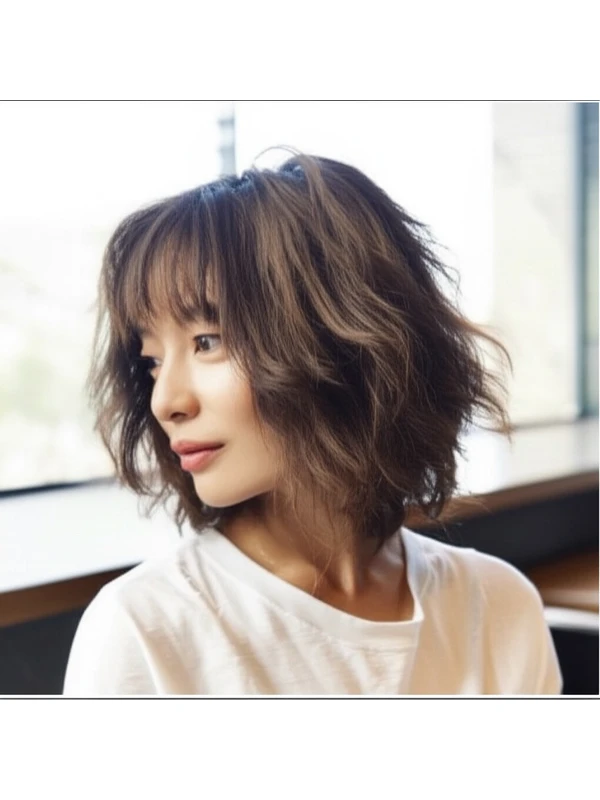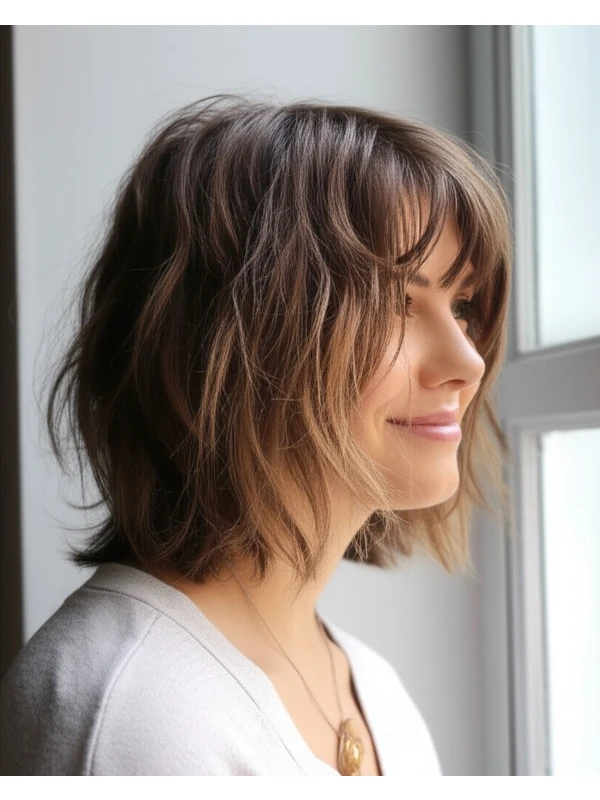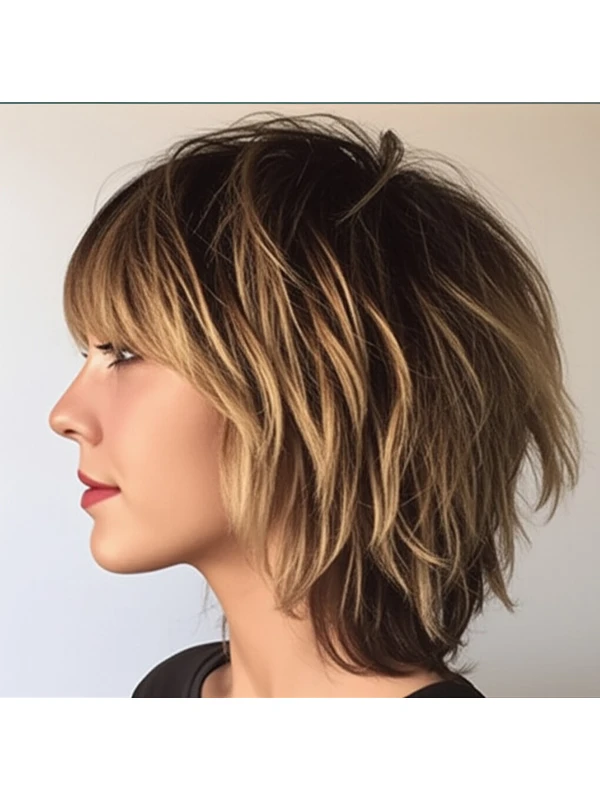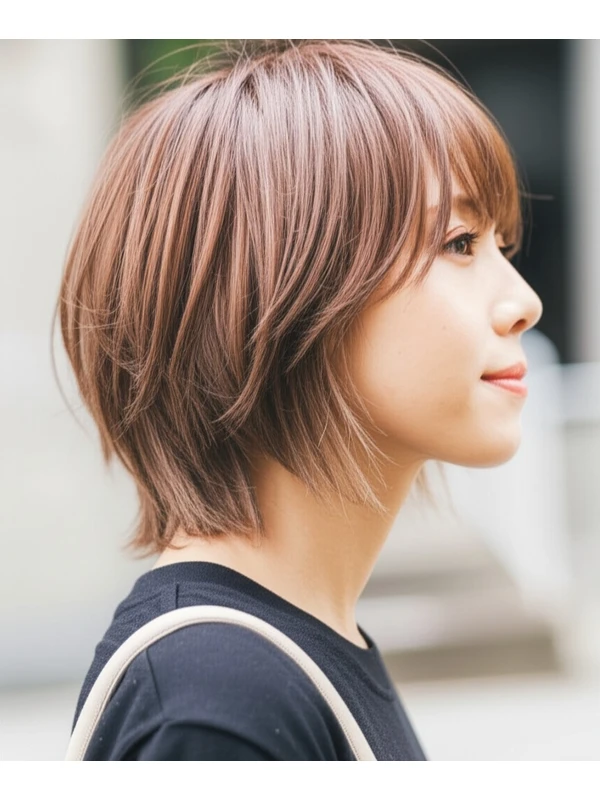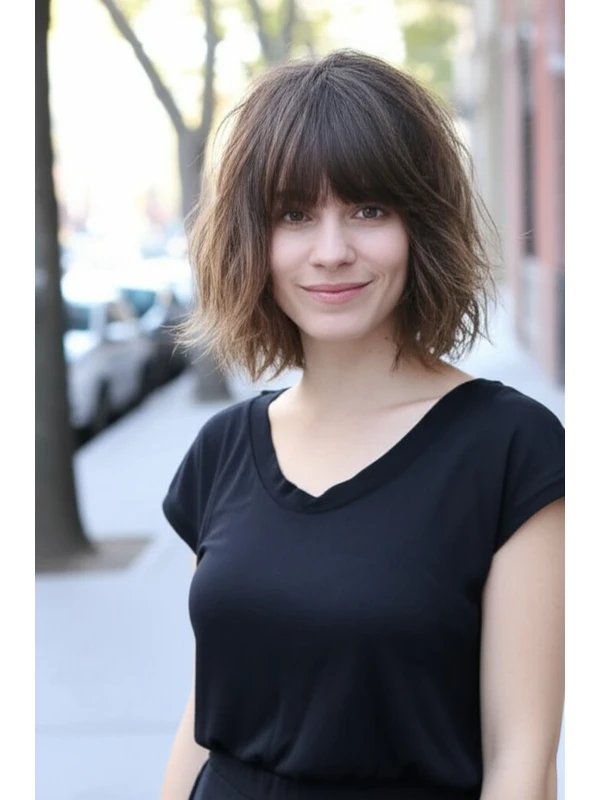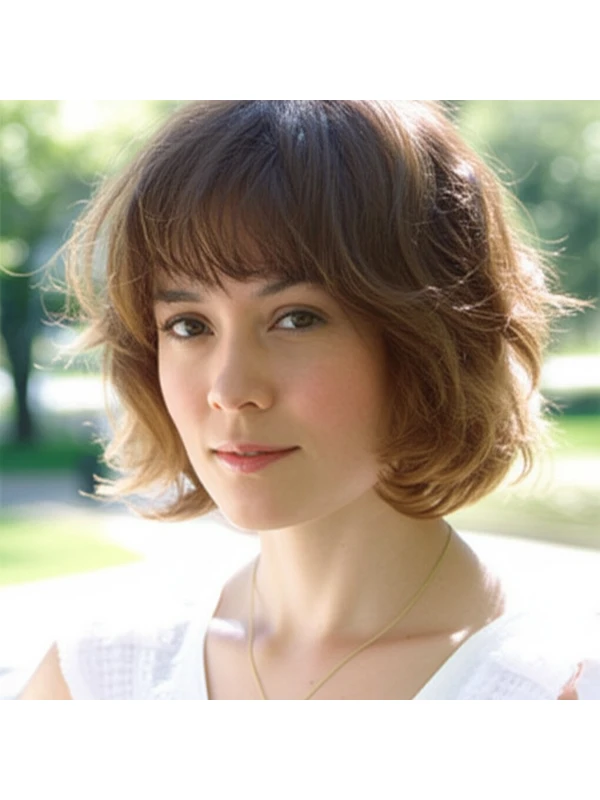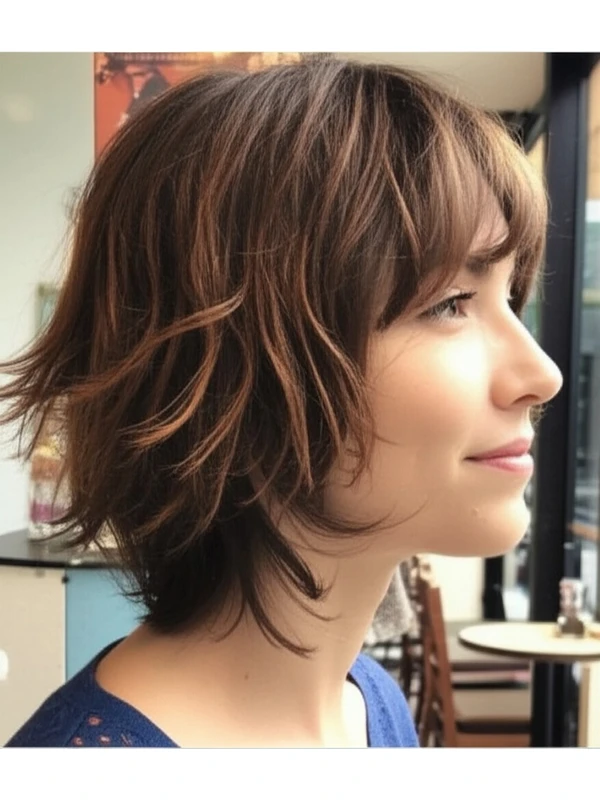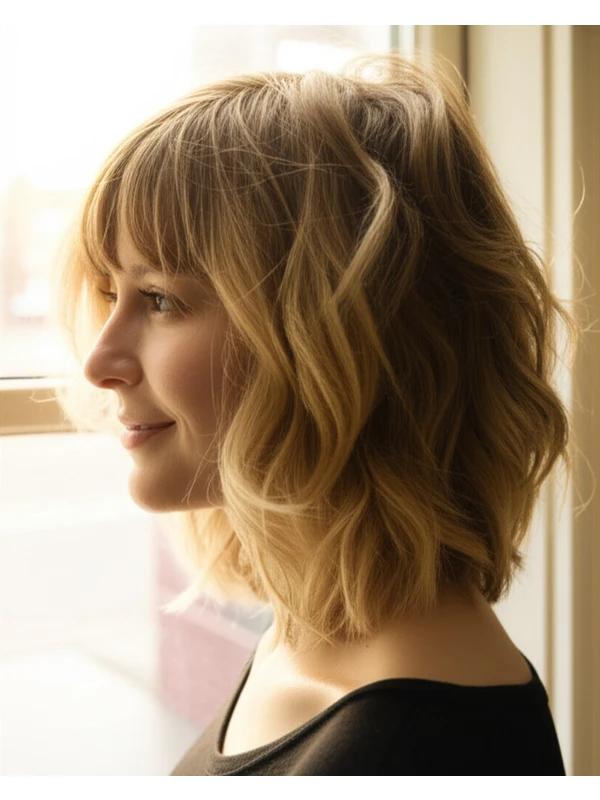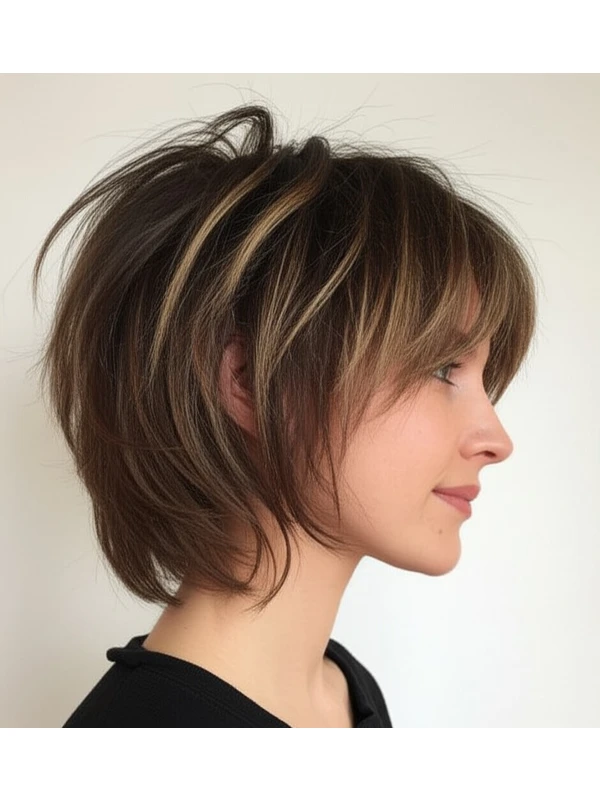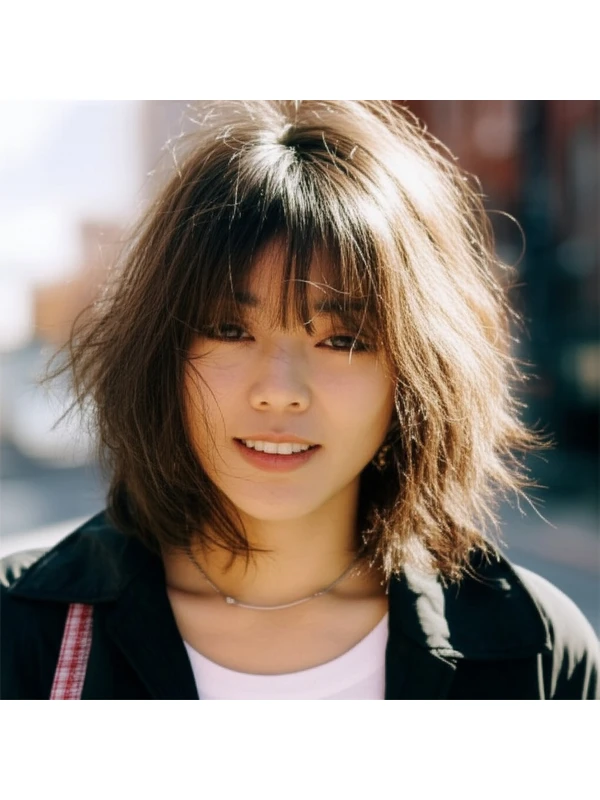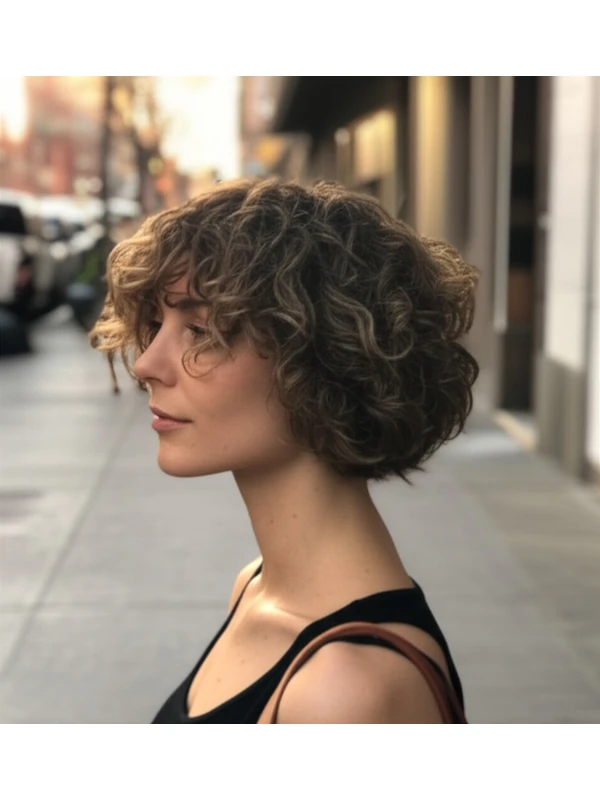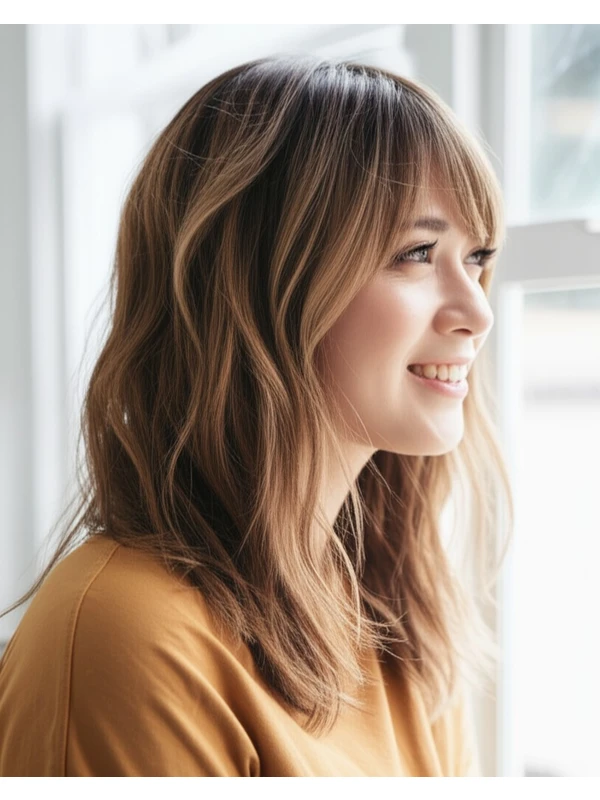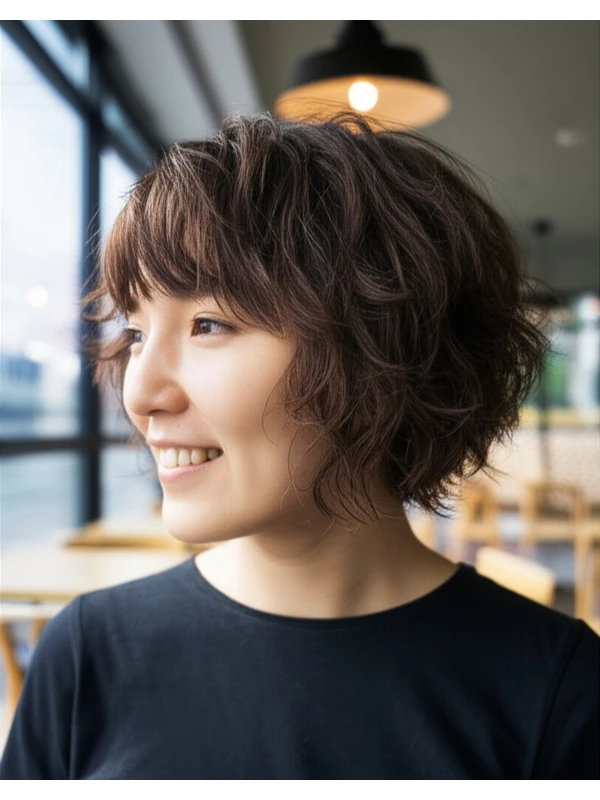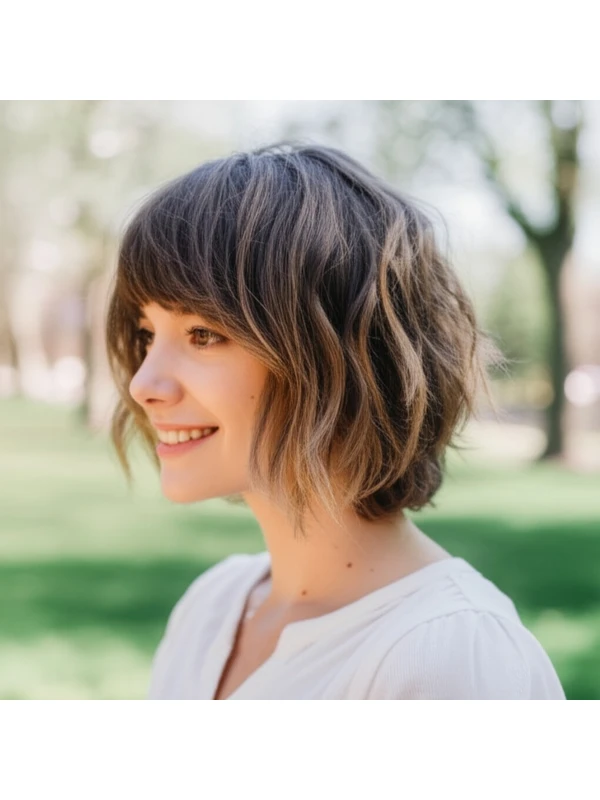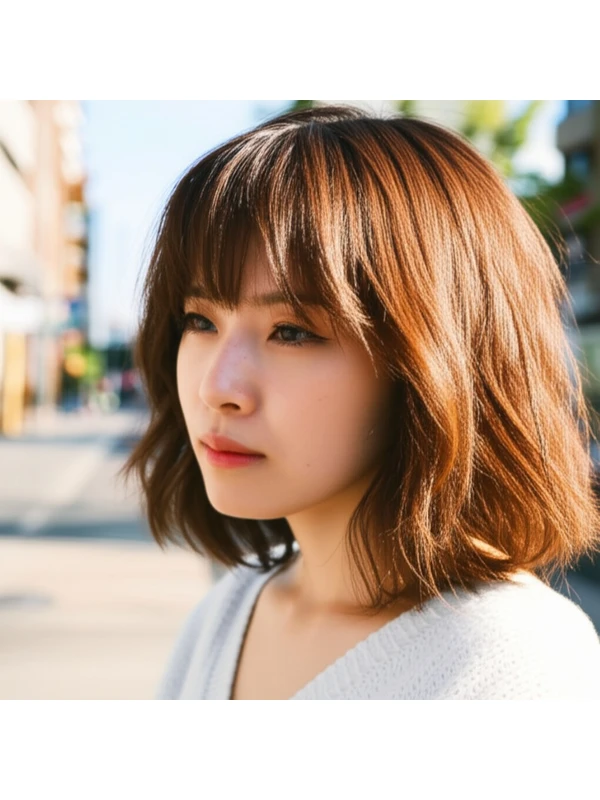#The Layered Shag: A Modern Classic
The shag haircut has made a huge comeback! But it's not your parents’ shag – this modern version is all about texture, movement, and effortless cool. Let’s dive into everything you need to know about the layered shag, from what makes it unique to how to style it for any occasion.
#1) Background & Definition: What Is a Shag?
The shag isn't just one thing; it's a philosophy of layering! Think choppy, textured layers that create volume and movement throughout the hair. It’s designed to look intentionally undone – think "I woke up like this" even when you haven't.
Key Features:
- Heavy Layering: The defining characteristic! Layers are cut at different lengths to remove weight and create texture.
- Face-Framing Pieces: Shorter layers around the face soften features and add dimension.
- Choppy Ends: A deliberately imperfect, textured finish that contributes to the "undone" look.
- Volume at the Crown: Layers are often strategically placed to lift hair away from the scalp for added volume.
Typical Length Ranges: Shags can be adapted to almost any length! You'll see them in:
- Short Shag: Chin-length or shorter, with lots of short layers and a bold look.
- Mid-Length Shag (The Most Common): Collarbone to shoulder-length – versatile for most face shapes and hair types.
- Long Shag: Extending past the shoulders, retaining length while still embracing the layered texture.
Alternative Names: You might hear it called a "modern shag," “textured bob,” or simply a "layered cut with lots of movement."
#2) Face Shape Fit: Finding Your Perfect Shag
The beauty of the shag is its adaptability! However, understanding how it interacts with your face shape will help you and your stylist achieve the best result.
- Oval: Lucky you! Most shags look fantastic on oval faces. Embrace a full fringe or soft curtain bangs to highlight symmetry.
- Round: A longer shag (past the chin) with angled layers that create length is ideal. Avoid blunt cuts and too much volume at the cheeks. Side-swept bangs are your friend!
- Square: Soften those angles with a shag featuring face-framing layers and wispy, feathered ends. A curtain bang can beautifully diffuse a strong jawline.
- Heart: A mid-length shag with shorter layers around the chin will balance a wider forehead and pointed chin. Avoid too much height at the crown.
- Diamond: Layers that start below the cheekbones create softness and width, balancing narrow cheeks. A fringe can help shorten a longer face.
- Oblong (Long): A shag with shorter layers throughout will add width and break up length. Side-swept bangs or curtain bangs are excellent choices to visually shorten the face.
#3) Body Proportions & Height Guidance: Balancing Your Silhouette
The shag can play tricks on your perceived proportions – in a good way! Consider these factors:
- Petite: A shorter, chin-length shag with minimal volume will prevent you from looking overwhelmed.
- Average Height: Most lengths and volumes of shags work well. Experiment!
- Tall: Longer shags (past the shoulders) add visual weight and balance height.
- Narrow Shoulders: Layers that create width at the sides visually broaden your shoulders. A side part also helps.
- Broad Shoulders: Avoid excessive volume on top, which can accentuate shoulder width. A middle part or slightly longer layers can help soften the look.
- Short Neck: Shorter shags with face-framing layers draw attention upward and elongate the neck visually.
- Long Neck: Longer shags with more volume at the crown add visual bulk and balance a long neck.
#4) Works Best With Hair Types & Densities: A Texture Breakdown
The shag is incredibly versatile, but understanding how it interacts with your hair's natural texture is key.
- Straight Hair: Layers will create movement and volume that straight hair often lacks. Styling with a texturizing product is essential to enhance the layers.
- Wavy Hair: The shag loves wavy hair! Layers amplify waves, creating a more defined and textured look. Embrace your natural texture – air drying is often best.
- Curly/Coily Hair: A shag can add shape and definition to curls and coils. Important: Shrinkage needs to be factored in—what looks like mid-length in the salon might end up shorter when dry! Communicate this clearly with your stylist.
- Fine Hair: Layers create the illusion of thickness, but too many layers can make fine hair look even thinner. Focus on strategic layering and root volume.
- Medium Hair: The shag is a perfect match for medium density hair – it will enhance natural texture without looking sparse or overly bulky.
- Thick Hair: Layers are essential to remove weight and create movement in thick hair. Don’t be afraid of shorter layers!
Shrinkage Note (Curls/Coils): Always have your stylist cut your shag dry if possible, or factor in shrinkage when determining the initial length.
#5) Styling Variations: From Casual to Chic
The beauty of a shag is its versatility – it can be dressed up or down!
- Sleek vs. Textured: A sleek shag uses smoothing products and minimal texture for a polished look. A textured shag embraces natural waves/curls with texturizing sprays and sea salt mists.
- Middle vs Side Part: A middle part creates symmetry, while a side part adds asymmetry and can visually change face shape.
- Fringe Variations: Curtain bangs (longer, parted in the middle), blunt fringe (straight across), wispy fringe (soft and feathered) – all work with a shag!
- Occasion Styling:
- Casual: Air dry with a texturizing product.
- Office: Blow-dry smooth or add subtle waves with a flat iron.
- Evening: Add volume at the roots and create defined curls/waves using hot tools.
#6) Maintenance: Keeping Your Shag Sharp
- Trim Cadence: Every 6-8 weeks to maintain shape and prevent it from looking overgrown.
- At-Home Routine: Focus on enhancing texture – avoid heavy products that weigh down layers.
- Heat vs Air Dry: Air drying is ideal for embracing natural texture. If using heat, apply a heat protectant!
- Product Checklist:
- Shampoo & Conditioner: Lightweight formulas.
- Leave-In Conditioner: For moisture and detangling (especially important for curly/coily hair).
- Texturizing Spray or Sea Salt Mist: For that effortless, "undone" look.
- Root Lifter: To boost volume at the crown.
- Finishing Serum or Oil: To tame frizz and add shine (use sparingly!).
- Estimated Daily Styling Time: 5-15 minutes (can be longer if using hot tools).
#7) Grow-Out Roadmap: Evolving Your Look
- Months 1-3: The shag looks fresh and defined. Regular trims are crucial to maintain the shape.
- Months 4-6: Layers may start to blend together slightly. A trim can re-establish definition. Consider a slight adjustment to your fringe style.
- Beyond 6 Months: You can either keep the shag shorter for a more edgy look or let it grow out into a longer, softer version.
#8) Color Pairings: Enhancing Dimension
- Cool Undertones (pink, blue): Icy blondes, ash browns, and silver tones complement cool skin tones and enhance the shags’ texture.
- Warm Undertones (yellow, gold): Honey blondes, caramel highlights, and copper shades brighten warm skin tones and add warmth to the layers.
- Low-Commitment Options: Balayage or babylights can add dimension without a harsh root line. Root shadowing creates depth at the scalp.
#9) Season & Occasion Guide: Styling for Every Moment
- Spring/Summer: Embrace lighter, airier styles with minimal product.
- Fall/Winter: Add warmth and texture with richer color tones and deeper styling techniques.
- Work: A more polished shag – smooth blow-dry or subtle waves.
- Weddings: Romantic curls or a sleek, sophisticated style.
- Parties: Playful, textured styles with bold accessories.
#10) Cost & Time: Salon Details
- Salon Time: Typically 1.5 - 3 hours for the initial cut and styling.
- Price Range: Expect to pay a moderate to high price range (relative terms – will vary significantly by location and stylist experience).
#11) Pros & Cons: Weighing Your Options
Pros:
- Versatile style that suits many face shapes and hair types.
- Adds volume and movement.
- Effortless, "cool" aesthetic.
- Can be adapted to different lengths and textures.
Cons:
- Requires regular trims to maintain shape.
- Styling can take time if you want a specific look.
- May not work well for very fine hair without careful layering.
#12) Salon Consultation Script: Questions to Ask & Discuss
Here are some prompts to help guide your conversation with your stylist:
- "I'm interested in a layered shag haircut. Can you show me some examples of different lengths and styles?"
- “What layers would best suit my face shape?”
- “How will this cut interact with my natural hair texture (wavy/curly/coily)?”
- “Can we discuss how to style it for both casual and more formal occasions?”
- "What products do you recommend for maintaining the shag's shape and texture?"
- "I have [hair concern - fine, thinning, etc.]. How can we address that with this cut?"
FAQs: Your Burning Questions Answered
- Is a shag haircut hard to style? Not necessarily! It’s designed for an effortless look, but achieving a specific style (e.g., sleek vs. textured) may require practice and the right products.
- Can I get a shag with bangs? Absolutely! Curtain bangs, blunt fringes, or wispy layers all work beautifully with a shag.
- Will a shag make my hair look thinner? It can if too many layers are cut on fine hair. A skilled stylist will consider your density and layer accordingly.
- How long can I grow out a shag? You can grow it to any length you desire! As it grows, the layered effect will soften.
- Can I get a shag if my hair is very damaged? Possibly, but discuss this with your stylist first. They may recommend some conditioning treatments before cutting.
- What’s the difference between a shag and a wolf cut? While similar, a wolf cut tends to have even more dramatic layers and volume at the crown than a classic shag.
